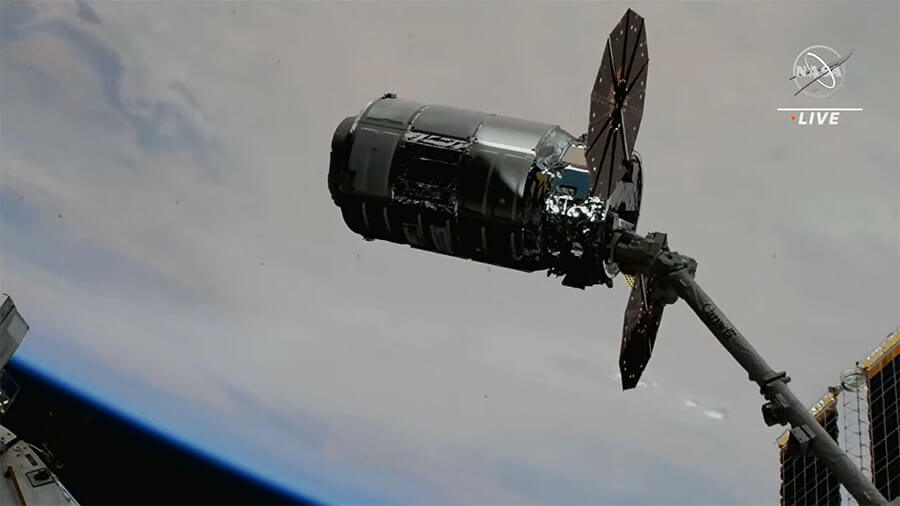Northrop Grumman’s robotic Cygnus spacecraft will arrive at the International Space Station early Thursday morning (Feb. 1), and you can watch the rendezvous live.
The Cygnus launched atop a SpaceX Falcon 9 rocket from Florida’s Cape Canaveral Space Force Station on Tuesday (Jan. 30), kicking off a 40-hour orbital chase.
That chase will come to an end around 4:15 a.m. EST (0915 GMT) on Thursday, when NASA astronaut Jasmin Moghbeli captures Cygnus using the International Space Station‘s (ISS) Canadarm2 robotic arm. You can watch the action live here at Space.com, courtesy of NASA, beginning at 2:45 a.m. EST (0745 GMT).
Related: Facts about Cygnus, Northrop Grumman’s cargo ship

This Cygnus vehicle — named the S.S. Patricia “Patty” Hilliard Robertson, after a NASA astronaut who died in a private plane crash in 2001 — is carrying more than 8,200 pounds (3,720 kilograms) of supplies and scientific hardware for the astronauts aboard the orbiting lab.
Among the experiments is a European Space Agency (ESA) project that will test the 3D printing of small metal parts in a microgravity environment.
“This investigation provides us with an initial understanding of how such a printer behaves in space,” ESA’s Rob Postema said in a NASA overview of the cargo mission, which is known as NG-20 because it’s the 20th that a Cygnus is flying to the ISS for NASA.
“A 3D printer can create many shapes, and we plan to print specimens, first to understand how printing in space may differ from printing on Earth and second to see what types of shapes we can print with this technology,” Postema added. “In addition, this activity helps show how crewmembers can work safely and efficiently with printing metal parts in space.”
The Cygnus will remain attached to the ISS for about six months, then depart and head back down for a fiery death in Earth’s atmosphere. One experiment aboard the freighter, called the Kentucky Re-entry Probe Experiment-2, will gather data during this suicide dive.
The ISS is currently serviced by two other robotic cargo spacecraft — SpaceX’s Dragon capsule and Russia’s Progress vehicle. Progress and Cygnus are expendable, but Dragon is reusable, making soft ocean splashdowns under parachutes to wrap up its orbital missions.